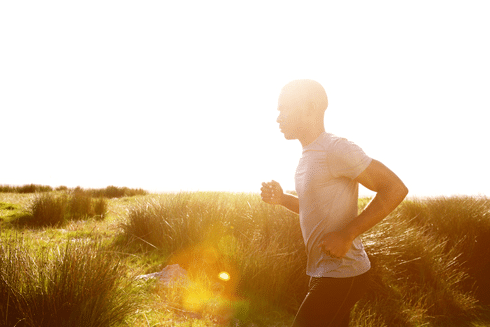If you’re a regular Health Watch reader, you know the importance of adequate vitamin D. And you also know it’s crucial to your health to get regular exercise.
Now, a new study shows the power of combining them. Researchers at Johns Hopkins University found a powerful synergistic link between vitamin D and exercise in preventing heart attacks and strokes.
Scientists analyzed the health of more than 10,000 Americans with an average age of 54. They followed them for almost 20 years. Researchers looked at participants’ self-reported exercise habits and tested their vitamin D blood levels. Then they looked at which subjects suffered heart attacks or strokes.1
During the two decades of the study, about 1,800 of the subjects had at least one of these cardiac events. As you would expect, participants who didn’t exercise and had low vitamin had the highest risk.
Those who got plenty of exercise but were vitamin D deficient had average risk. The same was true for those who didn’t get much exercise but had adequate vitamin D.
But the story was different for those who did high-intensity exercise for at least 75 minutes a week and had vitamin D level of at least 20 nanograms per milliliter. Their risk was reduced by nearly a quarter.
In other words, the combined benefit of adequate vitamin D and exercise was far stronger than either factor alone.2 The study was published in the Journal of Clinical Endocrinology & Metabolism.
Best Source of Vitamin D
Dr. Erin Michos is associate director of preventive cardiology at the Ciccarone Center for the Prevention of Heart Disease at the Johns Hopkins University School of Medicine. She is a lead author of the study.
Dr. Michos points out that outdoor workouts are a great way to take advantage of the synergistic effects of exercise and vitamin D. That’s because your body produces vitamin D when sunlight hits your skin.
“Just 15 minutes of sunlight in the summer produces about 3,000 IUs of vitamin D, depending on latitude and skin pigmentation,” she said. People who live farther north and have darker skin will need more sun exposure, Dr. Michos noted.3
Three quarters of Americans are vitamin D deficient. Have your doctor check your vitamin D level.
If your reading is less than 20 ng/mL, you need more vitamin D. If it’s not possible for you to increase your sun exposure, eat more foods high in vitamin D. Good sources include organic mushrooms, pastured eggs, and oily fish like wild-caught salmon, herring, mackerel, and sardines.
If your levels are still too low (ideal levels are 40-60 ng/mL), take a quality vitamin D3 supplement. This is the active form and is superior to D2. We recommend 5,000 IUs a day.
Like this Article? Forward this article here or Share on Facebook.
References:
1 https://medicalxpress.com/news/2017-04-vitamin-d-heart-health.html
2 https://hub.jhu.edu/2017/04/28/vitamin-d-exercise-heart-health/
3 https://academic.oup.com/jcem/article-abstract/102/4/1227/3002901/Physical-Activity-Vitamin-D-and-Incident?redirectedFrom=fulltext

